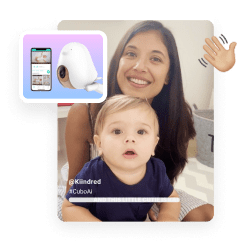Know your plastics
You hear a lot these days about “good plastics” and “bad plastics”. It’s true some plastics are better than others but research suggests that all plastics may leach hormone-disrupting chemicals particularly when the plastic is scratched or heated.
That is why I am not a huge fan of any plastic that comes into contact with food or drink. I classify plastics in contact with food as “Bad” and “Slightly better”.
Take a few moments to look around and you will see that plastic is everywhere. It is pervasive in our lives and certainly makes life more convenient, but it is important to know which type of plastic is suitable for what purpose. When you look at the bottom of your plastic containers, as I know you all do now, you will usually see a little recycling triangle with a number in it. That number tells you what sort of plastic it is.
Of course, plastic food storage containers are convenient, cheap and light but would you use them if you knew that they could be leaching hormone-disrupting chemicals such as BPA or other estrogen-mimicking chemicals into the food? So, here is the basic plastic info you need to know:
1. POLYETHYLENE, TEREPHTHALATE (PET or PETE)
- Soft drink/water bottles
- Tomato sauce
- Salad dressing
- Peanut butter/honey
Slightly better: Used to be considered safe but has recently been found to leach Antimony a heavy metal and have other estrogenic activity. If you drink bottled water ask yourself how long has this bottle been on the shelf? Has it been exposed to sunlight (heat)?
Get tailored content based on your week of pregnancy
By signing up, you agree to receiving our Newsletters. Cancel anytime.



2. HIGH-DENSITY POLYETHYLENE (HDPE)
- Milk/water/juice bottles
- Yoghurt/margarine tubs
- Cereal box liners
- Grocery/garbage bags
Slightly better: One of the better, more stable plastics but still known to leach estrogenic chemicals under certain circumstances
3. POLYVINYLCHLORIDE (PVC)
- Cling wrapped meats/cheeses/deli foods
- Clothing
- Shower curtains
- Lunchboxes
- Piping
- Flooring
- DVD’s
Bad: Phthalates are hormone-disrupting chemicals that leach into food, beverages and air. Always avoid PVC.
4. LOW-DENSITY POLYETHYLENE (LDPE
- Some bread/frozen food bags
- Squeezable bottles
Slightly better: Does not contain BPA but can leach other estrogenic chemicals; not as widely recycled.
5. POLYPROPYLENE (PP)
- Tomato sauce
- Yoghurt/margarine tubs
Better: Has a higher heat tolerance so is less likely to leach. The best of all the plastics.
6. POLYSTYRENE (PS)
- Foam insulation
- Coffee cups/tops
- Toys
- Drinking cups
- Take away containers
Bad: Contains Benzene, Butadiene, Styrene – carcinogenic, energy-intensive, poor recycling.
7. POLYCARBONATE (PC) – usually
- Baby bottles, sippy cups
- Microwave ovenware
- Canned food lining
- Rice cracker trays
- Blenders
Bad: Known to leach BPA or BPS– hormone disruptor, mimics oestrogen, leaches into food, carcinogenic. Plastic is not only destroying our planet it is harming our health. Exposure to synthetic oestrogens like those leaching from plastic has been linked to increased rates of breast and prostate cancers; early onset of puberty; feminisation of male genitalia; infertility; childhood obesity and hyperactivity. Plastic is not the only culprit here. Pesticides and many other environmental pollutants also contribute to our toxic body burden. The good news is plastic is a fairly easy one to manage.
What can you do?
It is impossible to completely avoid plastic coming into contact with your food but you can manage it by making a few simple changes:
- Swap out plastic lunchboxes for stainless steel or use beeswax wraps for sandwiches.
- Get rid of your plastic water bottles and use stainless steel or glass.
- If you have a polycarbonate blender make sure you do not blend hot liquids in it. If it is scratched you may need to replace it. Look for a glass or stainless steel option.
- Use glass baby bottles if possible.
- Limit canned food as the lining contains BPA. Fresh or frozen food is better.
- Don’t let cling wrap come into contact with the food
- Never put plastic in the microwave.
- Never put hot leftovers in a plastic container; use glass, ceramic or stainless steel.
Related Articles

Joanne Lia Follow +
Lorem ipsum dolor sit amet, consectetur adipiscing elit, sed do eiusmod tempor psum dolor sit amet, consectetur adipisc Lorem ipsum dolor sit amet, consectetur adipiscing elit, sed do eiusmod tempor psum dolor sit amet, consectetur adipisc Lorem ipsum dolor sit amet, consectetur adipiscing elit, sed do eiusmod tempor psum dolor sit amet, consectetur adipisc Lorem ipsum dolor...




